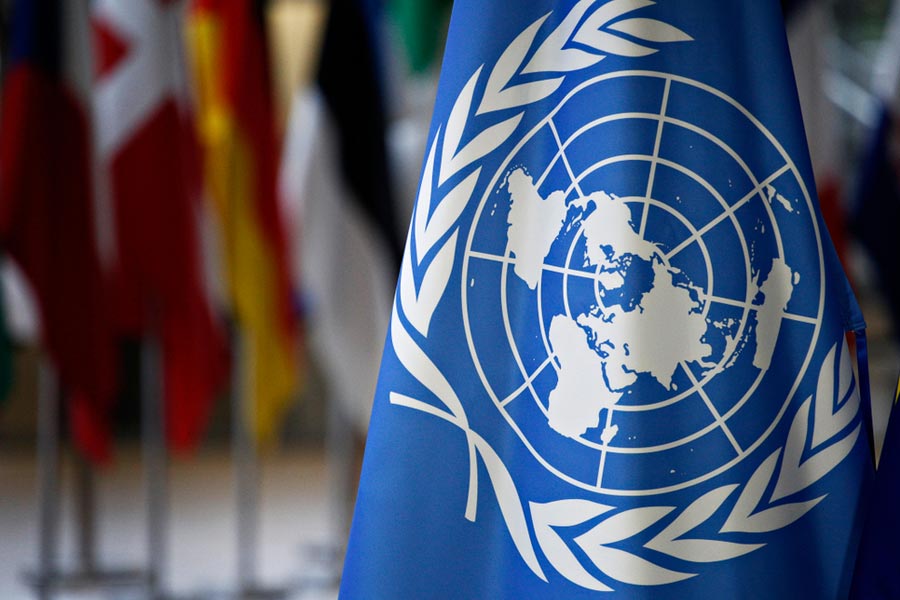In the wake of the pandemic and the inevitable consequences staring at us, protecting and reinforcing the immune system has been the buzzword (besides other safety measures) and several articles have appeared wherein doctors or healthcare experts have advised us on how to improve our immune system. To sum up their recommendations, the following will help us to fight against infection, germs and viruses.
- A good diet comprising fresh fruit and vegetables.
- Adequate sleep.
- Moderate exposure to sunlight.
- Reducing unwanted stress.
- Supplementing with vitamin C, D3 and zinc.
Besides the above recommendations, which are excellent, as an exercise coach I feel obliged to enlighten readers about the role played by the lymphatic system towards prevention of infections and diseases and the role that physical movement plays in enhancing the lymphatic system to perform this function.
What is the lymphatic system?
The lymphatic system is essentially a network of tissues and organs that help the body to get rid of toxins, waste and other unwanted material. To do this, the lymphatic system has to transport lymph (a fluid containing infection-fighting white blood cells) throughout the body. The white blood cells that are present in lymph are called lymphocytes and are the real “soldiers” that are responsible for protecting you against harmful “foreigners”, like viruses, bacteria, molds, parasites and unfamiliar proteins in food. Your ability to fight infections from a foreign source owes it big time to the efficient functioning of your lymphatic “soldiers”.
The lymphatic system, of course, has other functions but providing a strong immune system is one of its most critical functions.
Muscular contraction — key for lymph transfer and circulation
Here is the catch. Unlike the cardiovascular system, the lymphatic system is not a fully-automated system. What does this mean? As long as you are alive and your heart is beating, blood will pump throughout your body. The efficiency of the blood flow will, however, depend upon the efficiency of your entire cardiac system.
Lymph, however, will not circulate in the body in such an automated manner. Except for a very small part of the lymphatic system, which works involuntarily, by and large, lymph needs muscular contractions to create a “pumping action” to be propelled efficiently through the body. Quite literally, what I am saying is that our ability to ward off viruses and infections relies on the movement of our bodies and involves the musculoskeletal system.
A few years back, I had used the help of this column space to introduce the four ‘doctor principles’ of Paul Chek — Dr Diet, Dr Happiness, Dr Quiet and Dr Movement. An efficient functioning of the lymphatic system depends in no small extent to good movement and I will elaborate here the kind of movements that help to strengthen the immune system.
First, a trip down history
Some may recall that I had described the movement methodology of Moshe Feldenkrais in this space. Like Feldenkrais, Joseph Pilates was another exercise practitioner who believed that the brain should learn to fully control one’s movements for improved function and better health. He also propagated the complete movement of the full body in a flow-like sequence not hugely different from some yoga asana.
In 1914, Joseph was travelling in the UK with a travelling circus troupe when the First World War broke out. Due to his German descent, Joseph was declared an enemy alien and sent to an internment camp on the Isle of Man. In this camp, he started putting other inmates through a system of exercises on a daily basis. Pilates wrote in his autobiography several years later that these movements were based on utilising the deep core muscles and on a principle that laid great stress on recruiting the muscles of the human body in a correct sequence. It has also been reported that Joseph used his exceptional knowledge of corrective movement sciences to rehabilitate the wounded soldiers back to health and well-being.
Pilates was still detained in camp, practising his therapy when the influenza pandemic broke out in 1918. Infamously known as the Spanish flu, it infected close to 500 million people around the globe and killed around 50-100 million (estimated).
Now, I am asking you to consider this astonishing fact that not a single person in the internment camp with Joseph Pilates succumbed to this pandemic. The camp, as any other camp, would certainly have had crowded conditions and not the best hygienic environment. This goes against the grain of conventional wisdom and statistical predictive behaviour. The only thing that perhaps stood out was that the system of exercises the interns performed in the camp was markedly different from the rest of the population. Do also consider that in the early 20th century, people generally lived active lives, scarcely used private transport and did not suffer from lifestyle illnesses. So the population by and large was not inactive or “unfit”. What I am suggesting is that Joseph’s structured system of movements was able to provide to the body something general activity could not. When asked about this phenomenon, many years later, Pilates attributed this to the robust internal immune system built up by the inmates, thanks to the exercise system.
He went ahead to actually name two muscles of the body that contributed hugely to strengthen the immune system.
- The transverse abdominis: The deepest layer in our abdomen and the one we frequently use in core movements as also for laughing and exhalation.
- The calf muscles.
These were early days in exercise kinesiology and he could identify only two essential muscles. Physiologists thereafter have been able to identify and name several muscles in our body that lie in either series or in parallel/lateral manner and help to distribute and dissimilate forces throughout our bodies. These muscles, when recruited accurately, also help to create the “pump” for the lymphatic system that I mentioned earlier. Physiologists call it the “sling system” and have identified four to six slings within the body that act as a protective and force-generating system within us.
At our gym, we are passionately committed to the sling system of training and regularly use sling exercises to enhance movement efficiency and function. Some of the exercises are:
- Cable warrior pulls with squat/lunge patterns
- Rotatory lunges
- One-leg dead lifts
- Sprinter’s pulls
- Swiss ball lateral shifts
[Note: A small part of the lymphatic system is autonomous by nature. But human beings can enormously enhance the benefit of the lymphatic pump system by moving and exercising efficiently.]
Considering the present Covid-19 scenario where most patients are dying of pneumonia, allow me to add a trivia contributed by my friend and training mate, Dr Parikshit Bhattacharya: “Lymphatic pump technologies have been used very successfully for many years as an alternative and additional therapy to improve cleansing of the tracheobronchial tree and for increasing sputum production and expulsion, and reduce the duration of cough in patients with lower respiratory tract disease and pneumonia, thus leading to better recovery, especially for bedridden patients.”
The machine outrage
It is my belief that the early practitioners of exercise, like Eugen Sandow, were aware of these principles even though they may not have understood the clinical ramifications. However, these priceless gems of wisdom from people like Sandow, Feldenkrais and Pilates were lost in the commercial outrage of box-type gyms and franchised fitness houses that sprung up in the later part of the 20th century. These gyms encouraged a body-building kind of exercise programme and rampant use of machines and equipment. The accent was on isolated muscle creation rather than form and function. The whole fitness industry was driven by the commercial need to sell exercise hardware like treadmills, cross-trainers and other resistance-training machines. Sadly, these did nothing to enhance man’s wellness and functional efficiency. That is why even as we stand surrounded by gyms, fitness centres, spas and health clubs, man has never been so unfit and unwell at any other time of our civilisation.
Ranadeep Moitra is a strength and conditioning specialist and corrective exercise coach










